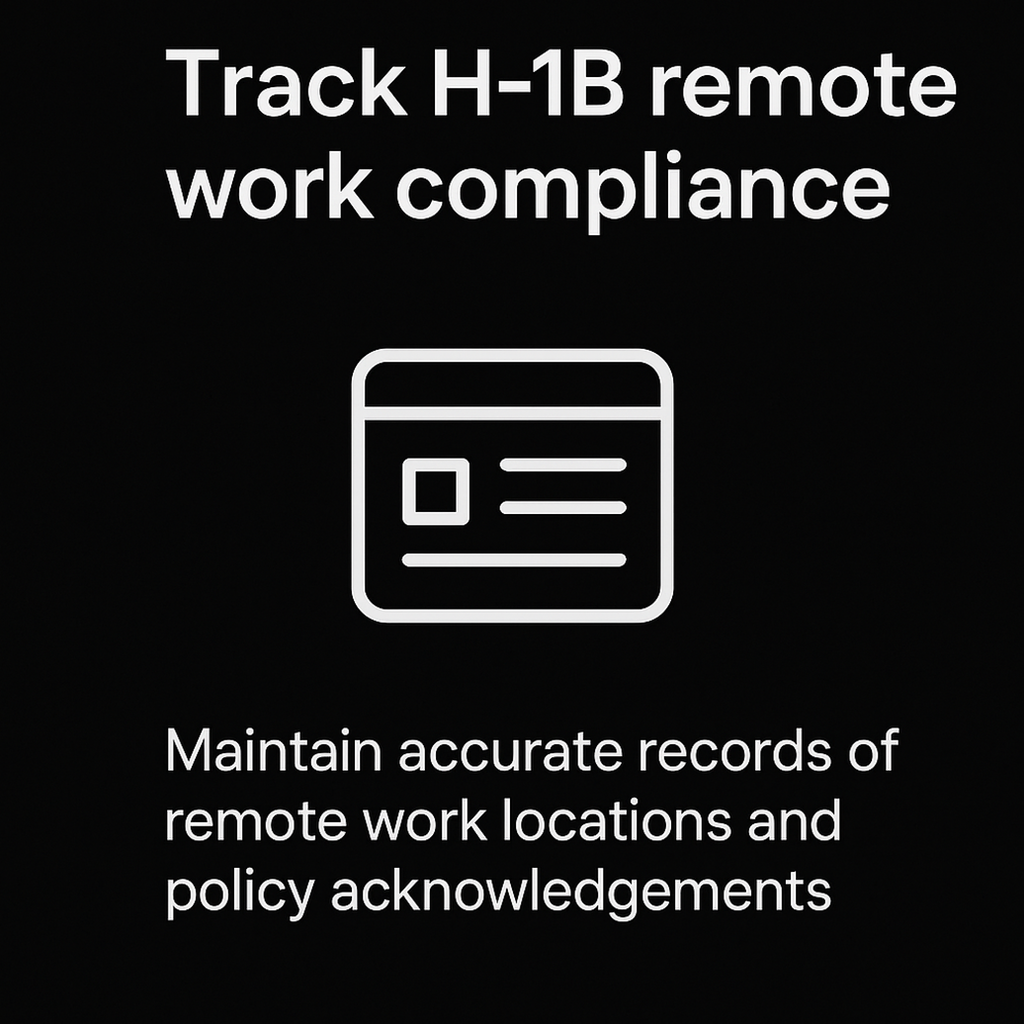Hybrid work has changed everything, including immigration compliance. Here's what HR teams need to know to stay ahead.
Why This Matters
Many HR leaders assume that once an H-1B petition is approved, location doesn’t matter anymore. But in reality, where a visa employee works, whether from home, a temporary site, or a new state, can trigger amendment requirements, compliance risks, and even case denial if not handled correctly.
This article breaks down how to think about remote work for H-1B employees and what policies your team should put in place now, before someone quietly relocates to Montana.
Key Considerations for H-1B Remote Work Compliance
USCIS wants to see:
- The actual office location
- Any regular remote work location (like home)
- Temporary worksites (client sites, training facilities, etc.)
If the employee’s home address was known at the time of filing and regularly used for work, it should be listed. A Labor Condition Application (LCA) posting is typically required at each of these locations.
What Triggers an H-1B Amendment?
An amendment may be needed if:
- The employee relocates to a new geographic area of employment not listed in the original petition
- There is a material change in the terms and conditions of employment, including new worksite addresses beyond the metro area of the original LCA
Examples that may require an amendment:
- Moving from New York City to Austin, TX
- Shifting from one to two remote days to full-time remote in another state
- Temporarily working from another state for months without disclosure
Short-term travel (less than 30 days) generally does not require an amendment, but it must remain truly temporary and not be a pattern.
What HR Teams Should Do Now
To prevent surprises (and immigration fire drills), HR should:
✅ Implement a Remote Work Disclosure Policy
Require H-1B employees to report:
- Where they plan to work from, including home addresses
- Any changes in residence, even temporary
- Extended trips or “workcations” before they happen
✅ Add Immigration Review to Location Change Workflows
Work with People Ops and Legal to flag:
- Any change-of-address forms
- Payroll or tax address changes
- VPN/IP monitoring (where appropriate)
✅ Document Location Approvals Internally
Keep a log of who has been approved to work remotely, from where, and whether immigration counsel has reviewed the location.
What If They Already Moved?
If you just found out a visa employee moved:
- Don’t panic, but act fast
- Contact immigration counsel to evaluate if a late amendment is required
- Document the date of discovery and take corrective action
This is where having a clear H-1B remote work compliance policy in place pays off. It creates a record of disclosure and a plan for response.
Final Thoughts: Don’t Let Location Jeopardize Status
Remote work is here to stay, but H-1B rules weren’t written for this level of flexibility. HR leaders don’t need to become immigration experts, but they do need clear policies, employee disclosures, and an early-warning system.
You’re not just preventing paperwork headaches. You’re protecting work authorization, timelines, and the employee’s peace of mind.
How WayLit Helps HR Stay Ahead
WayLit automates the part that keeps HR leaders up at night. Our platform tracks address change compliance in real time and alerts HR if:
- An employee’s address puts them out of H-1B compliance
- A future relocation would require a visa or LCA amendment
You don’t have to chase down updates or cross-check compliance on your own. WayLit gives you the visibility and proactive alerts you need to stay ahead—and keep your team protected.
Content in this publication is not intended as legal advice, nor should it be relied on as such. For additional information on the issues discussed, consult a WayLit-affiliated attorney or another qualified professional.


.svg)


